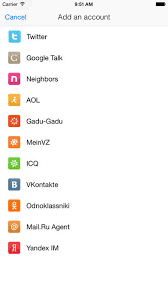

By 2005 MSN Messenger was shooting up in popularity and had roughly 2.5 billion messages being sent each day! MSN was the one thing every teenager looked forward to as they went home from school. Messenger, then came every 90s child’s all-time favourite messenger MSN Messenger. After this, year after year new instant messaging services were brought to the market. The first widely used messaging service was AOL Instant Messenger or AIM, which was created in 1997, this was more popular in North America which held 52% of AIM’s instant messaging market. It wasn’t until the late 1990s that Instant Messaging systems became popular and widely used by the general population. In 1961, we saw that we could chat to individuals in real-time but IRC allowed users to chat with groups in real-time. However, instant messaging didn’t become popular until the late 1980s when Internet Relay Chat (IRC) managed to allow its users to connect to networks with a client software to chat with groups in real-time. This was the first-time instant messaging seemed like a possibility. MIT had a Compatible Time-Sharing System (CTSS) which helped pioneer instant messaging by allowing up to 30 users to chat in real time. Let's go way back to 1961when MIT gave us our first taster of real-time chat or as we know it now instant messaging. However, “instant” messaging hasn't always been that instant.

Whilst instant messaging is common today, just two decades ago chatting with friends and even strangers online was such a revolutionary concept. Instantly sending those all-important messages to those all-important contacts. When we urgently need to talk to that one person or tell your group that urgent thing that happened today these apps have been there at your service. These messaging apps have been literal life savers when keeping in touch with friends and family distant and near. When we here instant messaging nowadays, all that really comes to mind is WhatsApp or Facebook Messenger.


 0 kommentar(er)
0 kommentar(er)
